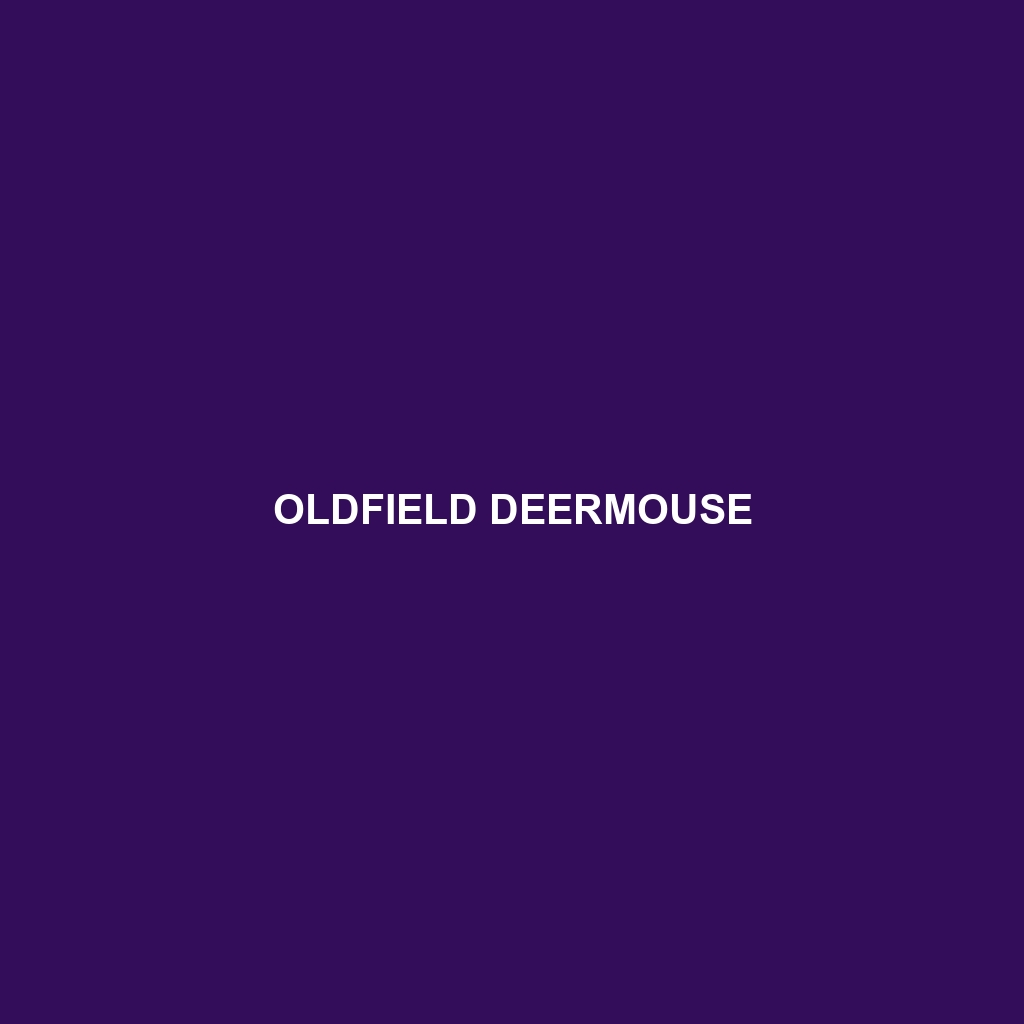Oldfield Deermouse (Scientific Name: Peromyscus polionotus)
Common Name: Oldfield Deermouse
Scientific Name: Peromyscus polionotus
Habitat
The Oldfield Deermouse primarily inhabits the southeastern regions of the United States, particularly in areas like Florida, Georgia, and Alabama. These small rodents prefer open grasslands, coastal scrub, and pine forests, where they find adequate cover and food sources. Their habitat often includes sandy soils and regions with dense vegetation, allowing them to thrive in environments with ample hiding spaces.
Physical Characteristics
The Oldfield Deermouse is a small mammal, typically measuring between 7 to 9 inches in length, including the tail. They are characterized by their soft, silky fur, primarily light brown or grayish in color with paler undersides. This distinctive coloration provides effective camouflage within their natural habitats. Their large eyes and ears, along with a long, thin tail, contribute to their unique appearance, making them easily identifiable among other rodent species.
Behavior
Oldfield Deermice are primarily nocturnal, exhibiting active behaviors during the night. They are known for their agility and quick reflexes, often demonstrating playful interactions within their social structure. These mice are skilled climbers and often build their nests in dense vegetation or underground burrows, providing safety from predators. Their social behaviors include vocalizations and scent-marking, which play a vital role in communication and territory establishment.
Diet
The diet of the Oldfield Deermouse consists mainly of seeds, fruits, and insects. They are omnivorous, foraging for food at night and using their keen sense of smell to locate edible items. Common food sources include grains, nuts, and plant materials found in their environment. Their feeding habits contribute to seed dispersal, making them essential players in the ecosystem’s health.
Reproduction
Oldfield Deermice typically breed between March and October, with a gestation period of around 24 days. Females can have multiple litters each year, usually consisting of 3 to 6 offspring. After birth, the young are cared for in the nest until they are weaned at approximately 3 weeks of age. Notably, mothers demonstrate protective behaviors, keeping their young close and safe from potential threats.
Conservation Status
The Oldfield Deermouse is currently classified as “Vulnerable” due to habitat loss and fragmentation. Conservation efforts are necessary to protect their dwindling populations and ensure their long-term survival in the wild. Efforts are focused on habitat preservation and restoration, enabling these animals to thrive once again.
Interesting Facts
Did you know that Oldfield Deermice can jump over three times their body length? They also have a remarkable ability to adapt to various environments, which helps them survive despite threats. Their high reproductive rate allows populations to rebound quickly, making them resilient in their habitats.
Role in Ecosystem
The Oldfield Deermouse plays a crucial role in their ecosystem as both prey and seed disperser. They serve as a food source for various predators, including owls, snakes, and small mammals. Additionally, their feeding habits help promote plant diversity by scattering seeds, contributing to the overall health and maintenance of their environment.
